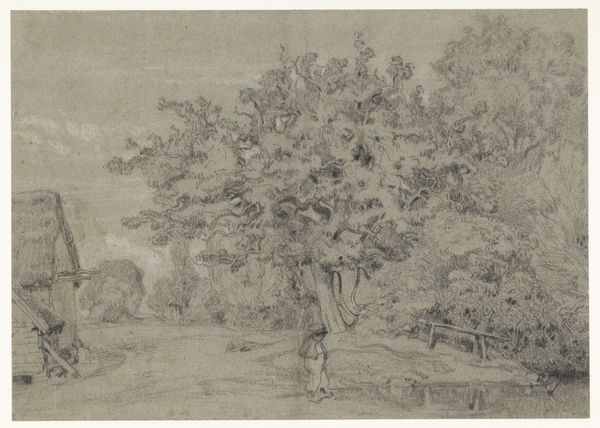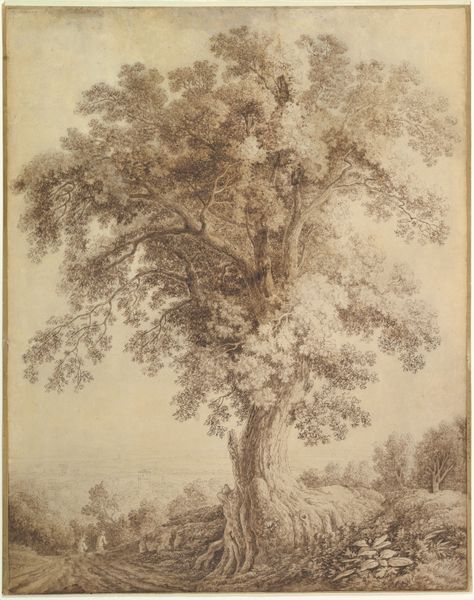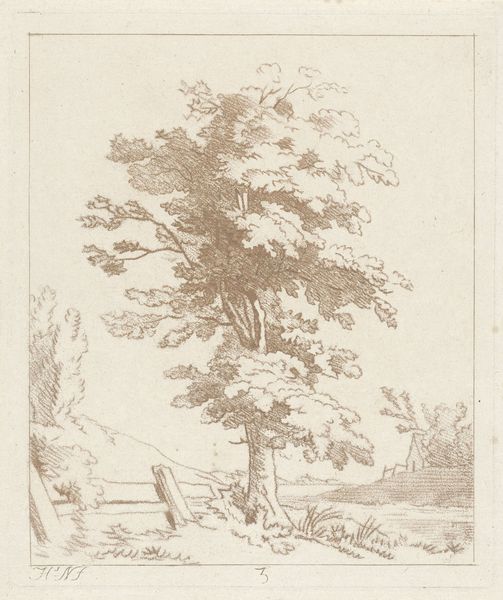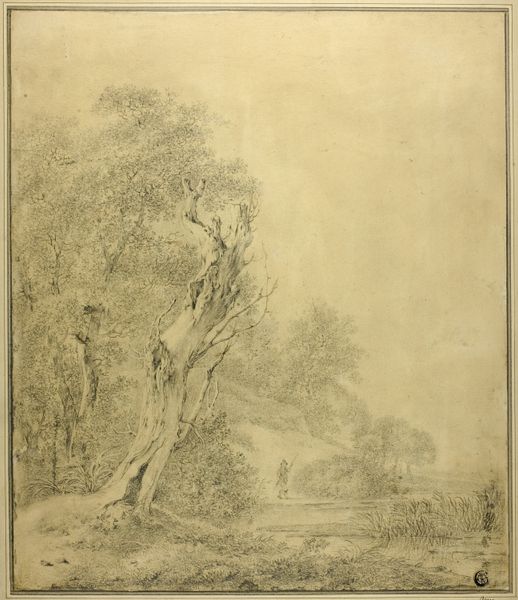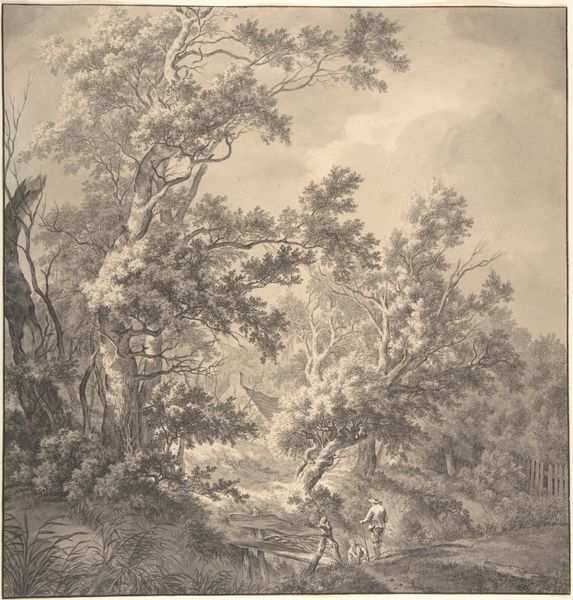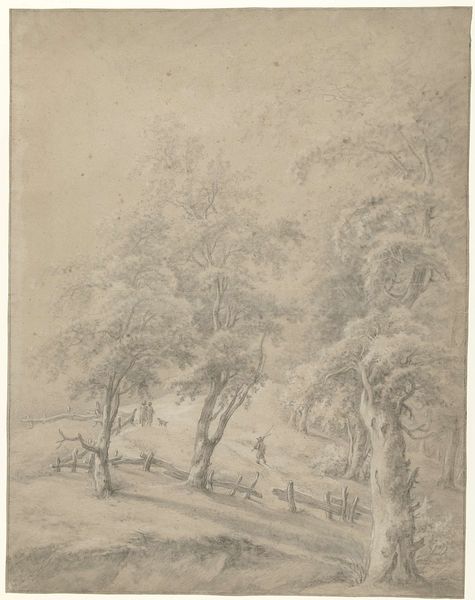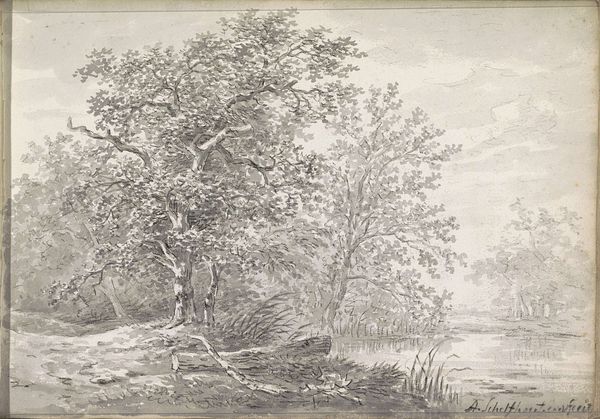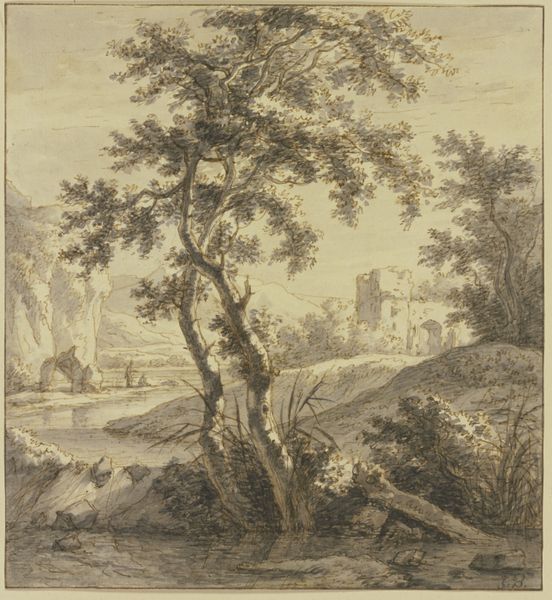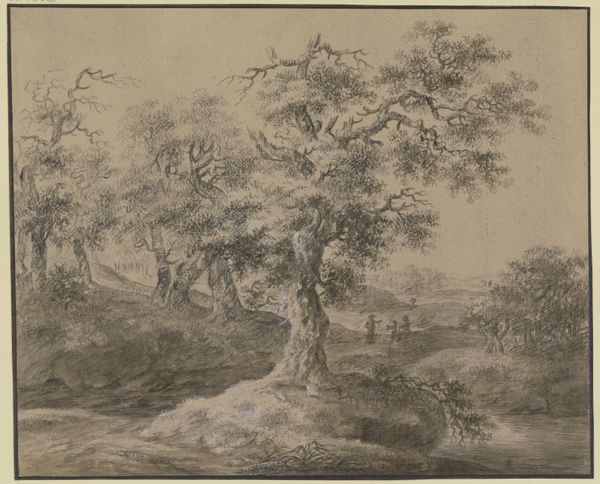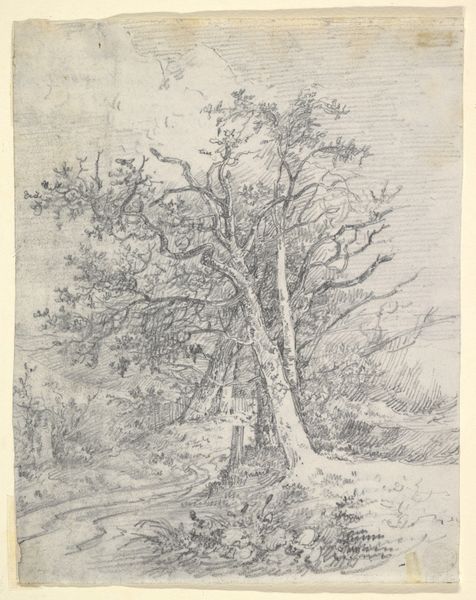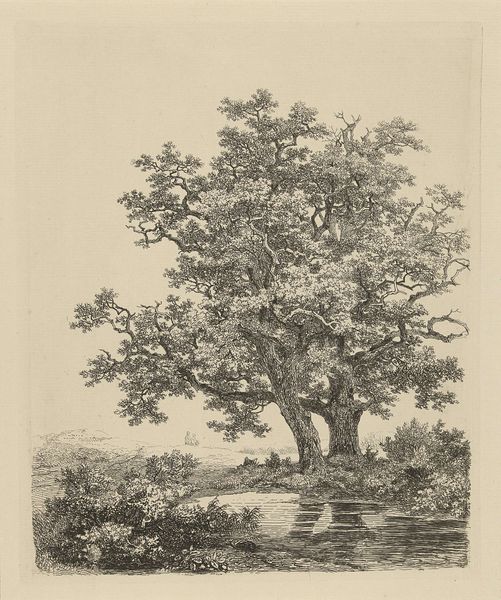
Blinde man wordt door een jongen geleid in een landschap met grote eikenbomen 1851 - 1896
0:00
0:00
Dimensions: height 335 mm, width 248 mm
Copyright: Rijks Museum: Open Domain
Curator: This graphite drawing, dating from around 1851 to 1896, is entitled "Blinde man wordt door een jongen geleid in een landschap met grote eikenbomen"—"Blind man led by a boy in a landscape with large oak trees." It is the work of Ludwig Munthe. The scene's tones are quite soft. What stands out to you? Editor: The overwhelming mass of the oak tree! Its intricate branching dominates the composition. And look at the layering of tones – Munthe has skillfully rendered depth with such simple means. I am also struck by the tonal similarity between the tree, figures, and ground, the figures almost seem camouflaged. Curator: I find it interesting how Munthe employs graphite, a material closely tied to mass production and accessible to many. This links the work to broader societal accessibility of art and landscape, moving away from exclusive oil paintings. The labor that is dedicated to outdoor sketching or “Plein-air” should also be highlighted in terms of the effort that is dedicated to each piece. Editor: True, yet consider the artistic choice to portray this narrative in a seemingly straightforward style. The emphasis is on capturing a moment, a sense of atmosphere, in which these grand, detailed oak trees become the real figures in this environment, with our subjects, seemingly vulnerable. Do you feel it conveys Romanticism in the vein of a yearning for nature and a contemplation of humanity's place within it? Curator: Exactly. Munthe situates labor – the act of creating this art – within a socio-economic context. Art creation at this time mirrors the era’s increasing industrial output and distribution. We begin to think about the labor, and its implications for art's function. I wonder about the boy's compensation, if any, for this very necessary work... Editor: While not overtly stated, consider how the drawing leads us to think about vulnerability and interdependence, particularly concerning perception. The texture and scale of the tree becomes crucial as we view a small story contained within it. The tree dominates in all ways. The entire scene hinges on balance and guiding and, frankly, I am still caught up on the oak’s compositional force! Curator: Indeed. And while the tree offers shade, its height and mass also create new implications for social relations to consider during a viewing, and the very real act of material consumption inherent to graphite-on-paper. Editor: These insights offer a different lens, revealing dimensions I had not previously considered.
Comments
No comments
Be the first to comment and join the conversation on the ultimate creative platform.
